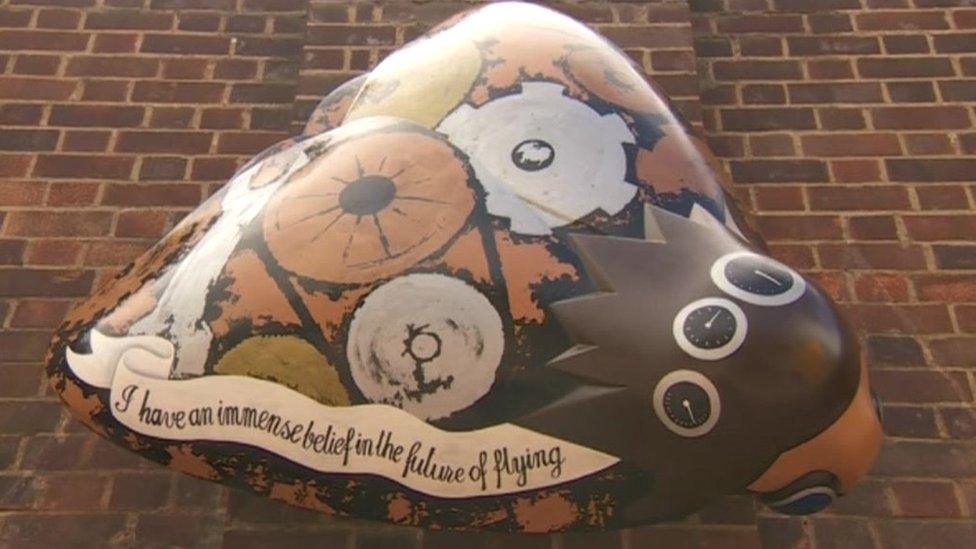Model moths mark Hull aviator Amy Johnson's death
- Published

A close up of one of the moth sculptures featuring Amy Johnson and designed by Kieron Reilly and Lynsey Brecknell
Models of moths have been appearing on buildings in Hull to commemorate aviator Amy Johnson who was born there.
The first 18 of 59 fibreglass moths, each about 5ft (1.5m) wide, have been placed across the city to mark the 75th anniversary of her death.
Ms Johnson flew a De Havilland Gipsy Moth airplane from the UK to Australia in 1930 - becoming the first woman to do so.
The moth sculptures have been decorated by local artists.
Read more about this and other stories across East Yorkshire

This model was designed by Hannah Van Green
In 2010, the city commemorated the 25th anniversary of the death of poet Phillip Larkin with decorated toad sculptures, external.
The success of that idea was behind the "A Moth for Amy" trail.
Ms Johnson was born in St George's Road, Hull, on 1 July 1903.
Her solo flight to Australia took 19 days and she landed in front of a huge crowd in Darwin on 24 May 1930.

Amy Johnson died in 1941 after the plane she was piloting crashed into the Thames - her body has never been found
The 37-year-old died in mysterious circumstances during World War Two when the RAF plane she was transporting crashed in the Thames Estuary on 5 January 1941.
Her body has never been found.
- Published5 January 2016

- Published1 October 2015

- Published8 August 2015
